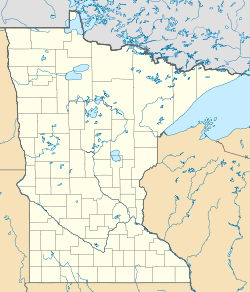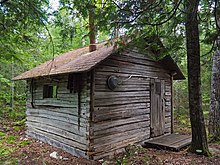Angora Township is a township in Saint Louis County, Minnesota, United States. The population was 249 at the 2010 census. Angora Township was named after Angora, in Turkey.
Balkan Township is a township in Saint Louis County, Minnesota, United States. The township was named after the Balkan Mountains. The population was 832 at the 2010 census.
Bassett Township is a township in Saint Louis County, Minnesota, United States. The township was named for William Bassett, a businessperson in the lumber industry. The population was 41 at the 2010 census.

Biwabik Township is a township in Saint Louis County, Minnesota, United States. Biwabik is a name derived from the Ojibwe language meaning "iron". The population was 804 at the 2010 census.
Cedar Valley Township is a township in Saint Louis County, Minnesota, United States. Cedar Valley Township was named for the white cedar in the valley of the Floodwood River. The population was 195 at the 2010 census.
Colvin Township is a township in Saint Louis County, Minnesota, United States. The population was 317 at the 2010 census.
Fairbanks Township is a township in Saint Louis County, Minnesota, United States. The population was 63 at the 2010 census.
French Township is a township in Saint Louis County, Minnesota, United States. The population was 567 at the 2010 census.
Gnesen Township is a township in Saint Louis County, Minnesota, United States. The population was 1,683 at the 2010 census.
Halden Township is a township in Saint Louis County, Minnesota, United States. The population was 129 at the 2010 census.
Linden Grove Township is a township in Saint Louis County, Minnesota, United States. The population was 145 at the 2010 census.
Morcom Township is a township in Saint Louis County, Minnesota, United States. The population was 94 at the 2010 census.
Owens Township is a township in Saint Louis County, Minnesota, United States. The population was 263 at the 2010 census.

Pike Township is a township in Saint Louis County, Minnesota, United States. The population was 417 at the 2010 census.
Prairie Lake Township is a township in Saint Louis County, Minnesota, United States. The population was 50 at the 2010 census.
Sturgeon Township is a township in Saint Louis County, Minnesota, United States. The population was 140 at the 2010 census.
Van Buren Township is a township in Saint Louis County, Minnesota, United States. It was named for Martin Van Buren, the eighth President of the United States. The population was 189 at the 2010 census.
Vermilion Lake Township is a township in Saint Louis County, Minnesota, United States. The population was 278 at the 2010 census.
White Township is an urban township in Saint Louis County, Minnesota, United States. The population was 3,229 at the 2010 census.
Willow Valley Township is a township in Saint Louis County, Minnesota, United States. The population was 126 at the 2010 census.





